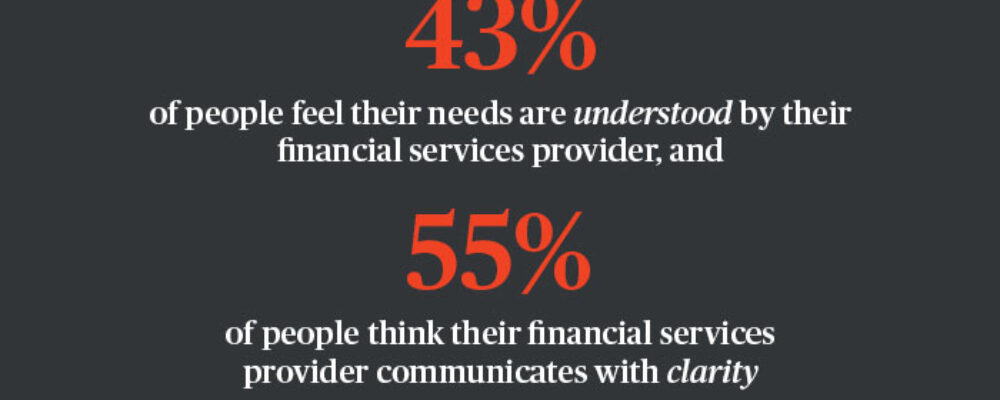What do we mean by ‘digital exclusion’?
When we talk about digital exclusion, we mean people who don’t use the internet or digital devices such as smartphones, tablets, and laptops. And then there’s also a group we call ‘digitally disadvantaged’. Digitally disadvantaged people do use the internet, but only in a limited way.
1. Come from a customer-driven perspective
The most inclusive strategies are driven by the goals of your different audiences, based on an in-depth understanding of them, their desires, and how your business relates to them – this is what we call ‘customer driven’ success, rather than customer ‘centric’.
Too often businesses assume the “needs” of minority audiences, design solutions for them, and then seek feedback. This is the reactive approach. Instead, businesses should take proactive steps to engage with and understand diverse groups before developing new concepts, services and products. You’ve probably witnessed the common pitfalls of companies doing this during Pride Month or on International Women’s Day.
The only digital strategies that will be successful start with inclusive research. You can reach digitally excluded audiences through focus groups, ethnographic studies capturing product or service use, co-production workshops, or by surveying views using a non-digital methodology (e.g., telephone interviews). Although these audiences do not represent the majority of your customers, you must have a strategy to meet their needs if you are to be truly customer driven. This will improve your delivery to all customers. Remember, services that benefit these audiences will benefit wider audiences, too (i.e. improvements to make a screen more accessible for people with visual impairments means that any users will find the screen easier to use).
Tom Wormald, Managing Partner, Yonder said: ‘look at your business not through the lens of what you’re selling but through the eyes of your customer. When you understand what customers are trying to achieve in their lives (goals), where they are struggling and what drives their decision making, you can take this insight and, using your expertise, knowledge and scale, you can create winning solutions that drive growth for your business.”
Chris Atkins, Managing Director, Yonder Data Solutions, said: “inclusive and representative research is fundamental to business strategy today. That is, research that fully reflects and incorporates the views and opinions of all parts of the population and which ensures underrepresented and unheard voices are included within the research sample framework. Without this, crucial insights will be missed and your important audiences will be isolated, left behind and potentially even lost.”
Case study: London’s evolving travel network
Have you noticed an increase in digital technologies across the transport network, like apps, contactless payments? And have you noticed how increasingly reliant networks are becoming on them, i.e., refusing cash payments, or only offering digital ticket machines only? The future of travel will see an increasingly digitised network across all touchpoints, which could increase efficiencies, reduce costs… but at the cost of isolating thousands of people. This shift presents huge opportunities for the transport industry to introduce inclusive strategies, maintain customer loyalty, trust and ensure no customer gets left behind.
Our recent work with London TravelWatch explored the use of digital services and assistance on the London travel network to understand how many Londoners struggle with using an increasingly digitalised travel system.
We found that 1.5 million Londoners are being left behind by a digital-first approach to transport. 1 in 6 people said they are unable to buy a ticket as they can’t use or don’t have access to a smartphone or internet connection. What’s more, we found forms of non-digital assistance, like station staff and information in ticket offices, are used by more than half (53%) of those who are digitally included – so how can travel providers meet the needs of their audiences whilst keeping up with the pace of digital evolution? Together, we developed a set of recommendations on how London travel providers can keep the transport network accessible to those who are digitally disadvantaged or excluded. London TravelWatch is now using the evidence to persuade travel providers and policy makers to put the recommendations into action.
This work brings to life the importance of engaging with every part of your customer base to inform the changes you make in response to digital evolution. With the right approach, you can engage, reach and support audiences that would otherwise be totally isolated.
“We should always strive to make transport accessible, affordable, and inclusive. Digital exclusion does the opposite – it puts up barriers and means people are excluded from being able to travel in and around London. We’re glad that our report, Left Behind Londoners – Digital Exclusion and Disadvantage in London transport, has paved the way for further conversation about how we can make technology work for passengers, rather than leave them behind.”
Sasha Langevdelt, London TravelWatch Campaign and Advocacy Officer
2. Measure the opportunity
Do you know how many of your existing and potential customers are digitally disadvantaged or excluded? If you know people aged 55+, there’s a strong chance that you know people who fit in that category.
2.6 million people hadn’t used the internet for 3 months according to the 2021 UK Consumer Digital Index. If you’re not sure how many customers and potential future customers fall into these categories, and you’re planning a new digital strategy, that’s scary. Even scarier if your digital strategy means non-digital options are taking a back seat or disappearing altogether… Why? Because you don’t know how much of a risk your digital strategy poses to your business.
What if your core customer feels alienated because there’s no longer a way to speak to a real human, so they head off to a competitor? What if there was an untapped, lucrative market that would no longer be able to use your services because digital platforms are not accessible to them? You need to understand the number of existing/new customers who may find your new digital strategy inaccessible to understand the importance of non-digital options.
Of course, embracing new digital technologies is an important part of a business’ continuous evolution, but doing so without crunching the numbers on how it could affect accessibility could have a major impact on revenue. 19% of women and 17% men are disabled (ONS data from England and Wales in 2021) – do you know how many of these people might be impacted by your digital transformation? Potentially millions. This is why customer driven strategies are so important – you must understand who your potential and existing customers are and what goals they are trying to achieve. Then you can adapt your new concept to truly make their lives easier.
3. Scrutinise your touchpoints
Digital inclusion relates to every part of your online presence. It’s about ensuring everything from your website and app to your social media, email marketing, the text size and colours you use, your ticket and self-checkout machines are accessible to all of your audiences. Businesses should be focusing on an inclusive omnichannel strategy to offer a seamless experience for all users. These considerations are a clear part of the new Consumer Duty outcomes: you need to ensure your products and services are designed to meet the different needs and characteristics of all your audiences. The FCA lists considerations such as forbearance, flexibility, and more time to make decisions.
The best way to adapt your strategy depends on what your digitally excluded audiences are striving to achieve. There is no ‘one size fits all’ approach. It might mean that as well as investing in AI to automate online customer service enquiries, you introduce a customer helpline to make telephone enquiries. Or perhaps your new self-service touch screen information points need to be positioned at a height that’s accessible to wheelchair users and have audio options for people with visual impairments to use. In stores, are your checkout machines easy to use with clear instructions? Is your website secure and GDPR compliant? We know from our work with Ofcom that 46% of people have experienced fraud or scams online, and that this it much more likely to be experienced by people with disabilities (51%), which means a fifth (19%) spend less time online and are further digitally disadvantaged. How well do you communicate your website security to build trust?
The options are endless, and there is room to innovate if you put what is important to them first and allow your imagination to take over. Those who are leading in this space will not go unnoticed.
4. Establish diverse executive advisory
When it comes to digital inclusion, diversity in senior decision makers must go beyond good representation of gender, ethnicities and backgrounds. Decisions related to digital services should ideally be made by inclusive teams with representation from those at risk of being digitally disadvantaged or excluded. That means senior leadership teams must strive to include people in older age groups (at least 55+), those with long term physical and/or mental health problems and those who understand what it’s like to lack the funds that give access to technology.
It’s clear that even for the most diverse senior teams, there will always be under-represented voices. One way to get around that challenge is forming an advisory panel – a panel that would meet regularly to provide independent steer. Various organisations (the Gambling Commission, Diabetes UK, Samaritans) have successfully engaged panels composed of seldom-heard voices which are unlikely to be found in senior positions in business. Deep engagement with an advisory panel will help your business explore how to better meet the needs of your digitally excluded audience alongside other specific needs without presuming.
So, your digitally excluded audience is only a minority – does that mean they can be ignored? Absolutely not. Digital transformation is a vital part of continuous evolution. Businesses must keep up with the pace of change to reap benefits for themselves and their audiences. However, they cannot isolate their vulnerable audiences in the process. Regulatory pressures and the expectations of your audiences are rising, particularly across the finance, insurance, utilities, retail and travel industries. The reality is that the people who find digital technologies inaccessible or prefer not to use them are not going away any time soon, and still need to have access to services and products. The businesses who succeed in this space are the ones who measure the opportunity, understand the goals of their audiences, and use them to drive solutions. Only then will they be truly inclusive.
“Yonder is a consulting firm that helps clients to unlock opportunity and deliver business impact.”
Please visit the firm link to site






